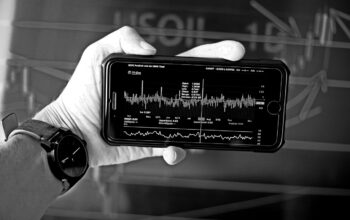Design is not just about aesthetics—it’s increasingly about innovation and functionality. In the world of science, design plays a crucial role in transforming the way we work, interact, and solve problems. Let’s dive into some of the most exciting trends in design right now.
AI-Driven Visuals in Graphic Design
Artificial intelligence (AI) is revolutionizing the realm of graphic design by helping create unique blends of automated and handcrafted visuals. For instance, tools like Adobe Firefly enable designers to generate visuals while maintaining a distinctly human touch. This blend allows for personalized and standout designs. Brands like Spotify are already using AI to create customized playlists with artwork that combines AI-generated elements with human curation.
Bold Typography and Mixed Media
In 2025, graphic design is seeing a pivot towards bold typography, often featuring oversized, distorted letterforms. These elements add motion and emotion to branding and digital experiences. Nike’s ad campaigns have embraced this trend, using high-contrast and expressive lettering to make bold statements. Additionally, the fusion of different artistic mediums—hand-drawn illustrations, photography, digital textures, and 3D elements—is becoming popular. Apple’s iPad Pro ads exemplify this mixed-media approach, creating an artistic and layered effect.
Sustainable Lab DesignOpens in a new window
The 24th annual Lab Design Conference is highlighting trends in sustainable lab design. These innovations include state-of-the-art facilities that prioritize environmental sustainability and collaborative workspaces. For instance, the Missouri Multi-Agency Laboratory Campus in the U.S. centralizes labs with sustainable systems to promote public health and environmental research.
Science-Led Design
AI is not just influencing graphic design; it’s also transforming the built environment through ‘science-led design.’ This approach integrates research and data into the design process to enhance decision-making about building performance and environmental impact. Emerging fields like neuro-architecture are applying insights from neuroscience to design healthier and more productive workspaces. Expect future design teams to include AI technologists who can bridge disciplines such as psychology and building engineering.
Innovative Materials
Researchers are continuously pushing the boundaries of materials science. The demonstration of a two-dimensional mechanically interlocked material has shown exceptional flexibility and strength, potentially revolutionizing industries. By adding just a small percentage of this material to existing materials, significant improvements in tensile modulus can be achieved.
These trends showcase how design, when combined with cutting-edge technology and research, can reshape industries and improve our daily lives.
References:
- https://www.sciencedaily.com
- https://www.sciencedaily.com/news/top/science/
- https://www.labdesignnews.com
- https://en.wikipedia.org/wiki/2025_in_science
- https://www.jll.com.au/en/trends-and-insights/research/2025-outlook-on-global-design-trends
- https://www.goproof.net/blog/graphic-design-trends-to-look-out-for-in-2025
- https://humanfactors.jmir.org/2025/1/e69333
- https://phys.org/tags/materials+science/



